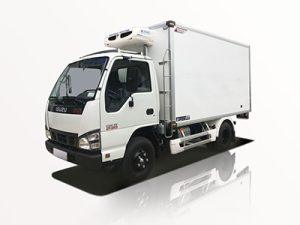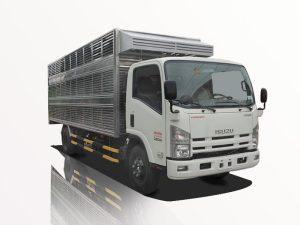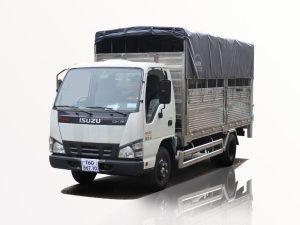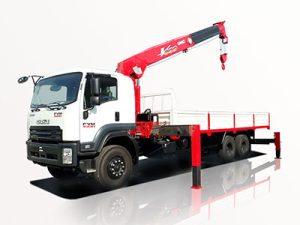Monday to Saturday - 8:00 -17:30
The Ultimate Guide to Choosing the Right Ladder for Working on Trucks
When it comes to working on trucks, safety and efficiency are paramount. One of the essential tools that can significantly enhance both is a ladder specifically designed for use with trucks. This guide covers everything you need to know about selecting, using, and maintaining a ladder for truck work.
Understanding the Importance of Using Ladders for Truck Work
Working on trucks often requires reaching elevated areas, whether for engine repairs, replacing parts, or performing maintenance checks. A reliable ladder not only provides the necessary height but also ensures safety while you work. Without an appropriate ladder, you risk accidents and fall-related injuries.
Types of Ladders for Truck Work
Choosing the right type of ladder for truck work is crucial. The most common types include:
- Extension Ladders: Ideal for reaching high spots on larger trucks.
- Step Ladders: Perfect for everyday maintenance tasks.
- Platform Ladders: Offer a stable working surface for various tasks.
- Articulating Ladders: Versatile and adaptable to different heights and angles.
Factors to Consider When Choosing a Ladder
Before purchasing a ladder for truck work, consider the following factors:
Height Requirements
Determine how high you need to reach. Measure the height of your truck and select a ladder that allows for safe access.
Load Capacity
Every ladder has a weight limit. Ensure you choose one that can support not just your weight but also any tools or equipment you may be carrying.
Material
Ladders are typically made from aluminum, fiberglass, or wood. Each material has its benefits:
- Aluminum: Lightweight and portable.
- Fiberglass: Best for electrical work because it is non-conductive.
- Wood: Heavy-duty but less common for truck work.
Stability Features
Look for ladders with anti-slip feet, wider bases, and stabilizers to enhance stability while working on a truck.
Setting Up Your Ladder Safely
Ensuring safety when setting up your ladder is essential. Here are some practical tips:
Choosing the Right Location
Place your ladder on firm, level ground. Avoid soft or uneven surfaces that can cause instability.
Proper Ladder Angle
Set the ladder at the correct angle, ideally a 75-degree angle. This helps distribute weight evenly and prevents falls.
Securing the Ladder
If working on uneven ground or reaching a significant height, consider securing your ladder with tie-downs or braces.
Using Your Ladder Effectively
Once you have your ladder set up, follow these guidelines for effective use:
Work Positioning
Always face the ladder when climbing or descending. Keep your body centered and maintain three points of contact.
Tool Management
Use a tool belt or container to manage tools while climbing. Avoid carrying tools in your hands to maintain balance.
Maintaining Your Ladder
A well-maintained ladder extends its lifespan and ensures safety. Keep these maintenance tips in mind:
Regular Inspections
Frequently check your ladder for any signs of wear, damage, or malfunction. Pay attention to rungs, feet, and locking mechanisms.
Cleansing
Clean your ladder after each use to remove dirt or grease that could compromise grip and traction.
Storage
Store your ladder in a dry place to prevent rusting or deterioration. Use wall mounts to keep it off the ground and organize your workspace.
Practical Examples of Ladder Use in Truck Work
To illustrate the importance of ladders in truck work, here are a few practical examples:
1. Engine Maintenance
When accessing components under the hood, a ladder allows a mechanic to reach the engine easily and provides a stable platform to work effectively.
2. Roof Repairs
For trucks with elevated roofs, a ladder is indispensable for carrying out inspections, cleaning, or repairing roof-mounted equipment.
3. Loading and Unloading Cargo
Using a ladder can assist in loading and unloading cargo from the truck’s bed, ensuring safety when lifting heavy items.
Frequently Asked Questions (FAQs)
1. What ladder type is best suited for working on trucks?
The best type typically depends on the truck’s height and the specific tasks, but extension ladders and platform ladders are commonly preferred for their reach and stability.
2. How do I ensure my ladder is safe to use?
Check for any damage or wear, ensure that it is placed on level ground, and follow all safety guidelines when setting it up and using it.
3. Can I leave my ladder outside?
While some ladders are weather-resistant, it’s best to store them indoors to prevent damage from the elements.
4. What is the weight limit for most ladders?
Most ladders have a weight limit that ranges from 200 to 300 pounds. Always check this capacity before use.
5. How often should I inspect my ladder?
Regular inspections should be done before each use. Additionally, a more comprehensive check should take place monthly or annually, depending on frequency of use.
6. Can ladders be repaired?
Minor repairs, such as replacing rubber feet or rungs, can typically be made. However, if the ladder shows significant damage, it’s often more prudent to replace it.









